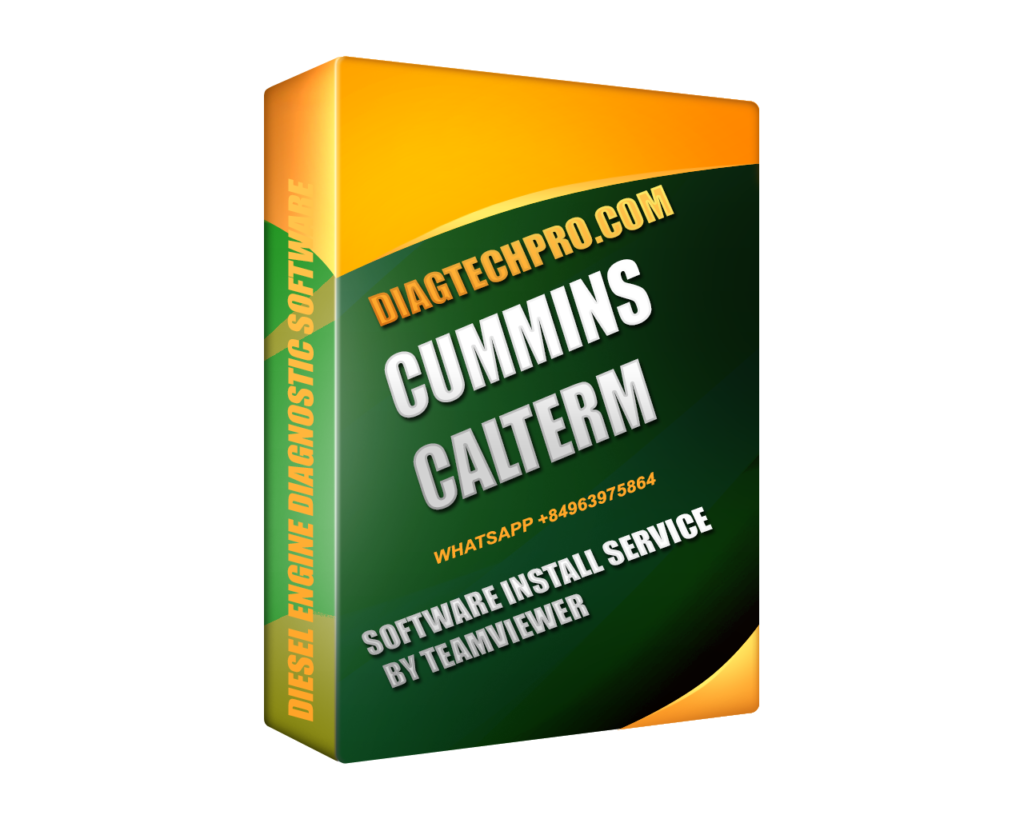As diesel engines become more complex and emissions regulations grow stricter, technicians and fleet operators are looking for smarter ways to manage engine performance and diagnostics. For many professionals, Cummins Calterm remains the gold standard for ECM-level access and tuning. But with a changing landscape in 2025—new ECM types, tighter compliance, and broader tool options—it’s worth asking: Is Cummins Calterm still the right choice?
In this guide, we break down what Calterm offers in 2025, its strengths and limitations, and how it stacks up against other ECM tools like Insite, ServiceMaxx, and DDDL. Whether you’re a seasoned technician or a shop owner evaluating new tools, this article will help you make an informed decision.
What Is Cummins Calterm?
Cummins Calterm is an advanced engineering software developed by Cummins for high-level interaction with its Engine Control Modules (ECMs). It allows for reading, editing, and writing of calibration data far beyond what standard diagnostic tools provide.
In 2025, Calterm continues to support newer ECM families like:
-
CM2450B (X15 EPA 2024+)
-
CM2350A (ISX engines)
-
CM2880 and hybrid variants
Calterm also includes updated templates and faster flashing capabilities, along with enhanced security and licensing mechanisms. It’s designed for technicians who need more than just diagnostics—it’s for those who tune, test, and optimize Cummins engines from the inside out.
Pros of Using Cummins Calterm
1. Deep ECM Parameter Access
Calterm enables access to hundreds of hidden and locked parameters, including:
-
Torque curves and fuel maps
-
Idle shutdown settings
-
Aftertreatment and EGR logic
-
PTO configurations
-
Speed governors and engine brake controls
This level of access is vital for advanced tuning and research.
2. Custom Calibration Uploads
With Calterm, users can upload .cal files (custom calibrations), test new configurations, and flash changes directly into the ECM—something not possible with dealer-level tools like Insite.
3. Real-Time Monitoring and Logging
Calterm offers powerful data logging for performance testing. It allows you to capture real-time information under load, making it ideal for fleet R&D and dyno work.
4. Broad ECM Support
The 2025 version supports a wide range of ECMs, from legacy CM570 to the latest Euro 6 and EPA 2024+ models.
5. Professional Support Available
With platforms like diagtechpro.com, users can get licensed Calterm software, verified ECM templates, remote support, and even calibration services—all tailored to their ECM model and needs.
Cons of Using Cummins Calterm
1. Steep Learning Curve
Calterm isn’t beginner-friendly. It’s built for engineers, and incorrect usage can lead to ECM failure, engine damage, or loss of compliance.
2. Legal and Regulatory Risk
Modifying emissions-related parameters is illegal on on-road vehicles in many regions. Calterm should only be used for:
-
Off-highway applications
-
Export vehicles
-
Academic or R&D testing
3. Requires CDF Templates and RP1210 Hardware
To use Calterm effectively, you need the correct:
-
CDF template (must match ECM model and software version)
-
RP1210 adapter (e.g., Cummins Inline 6/7, Nexiq, DPA5)
Without these, you cannot connect to the ECM or unlock advanced features.
4. Not Meant for Basic Diagnostics
If your work is limited to checking codes or performing regens, Calterm is overkill. Simpler tools will suffice.

Calterm vs. Other ECM Tools (Insite, ServiceMaxx, DDDL)
Let’s compare Calterm with other industry tools to see where it fits best:
Calterm vs. Insite
-
Calterm: Used for tuning and calibration. Requires more knowledge.
-
Insite: Ideal for diagnostics, fault clearing, and OEM-level procedures. Easier to use, but limited in parameter access.
Use both if you run a Cummins-focused shop—Insite for routine work, Calterm for tuning.
Calterm vs. ServiceMaxx
-
ServiceMaxx: Navistar-specific tool for diagnostics and limited parameter changes.
-
Calterm: Only supports Cummins engines but with deeper access and tuning potential.
Choose ServiceMaxx if you work primarily with International trucks.
Calterm vs. DDDL (Detroit Diesel Diagnostic Link)
-
DDDL: Designed for Detroit/MTU engines, offers some tuning access via authorized versions.
-
Calterm: Superior for Cummins engines in terms of calibration editing and ECM access.
If you support mixed-brand fleets, you may need both tools.
When Calterm Is the Right Choice
Calterm is worth it in 2025 if:
-
You work in engine R&D, emissions testing, or off-highway tuning
-
Your shop services export vehicles or fleets with special calibration needs
-
You want full control over performance, regen strategy, or fuel economy
-
You already use Insite but need to go deeper into ECM customization
-
You work with support from diagtechpro.com, which provides a stable, legal, and guided Calterm experience
When to Consider Alternatives
Calterm may not be right for everyone. It’s best to consider other tools if:
-
You only perform fault diagnostics, regens, or simple calibrations
-
You are new to ECM work and prefer an easier learning curve
-
You operate exclusively within emissions-restricted on-road markets, where tuning is limited or prohibited
In these cases, Cummins Insite, JPRO, or manufacturer tools may be more practical.
Conclusion
Is Cummins Calterm worth it in 2025?
For advanced users, tuning professionals, and fleets with special ECM needs, the answer is a clear yes. Its unmatched access to ECM logic, real-time monitoring, and calibration uploading makes it one of the most powerful tools for Cummins engine work.

